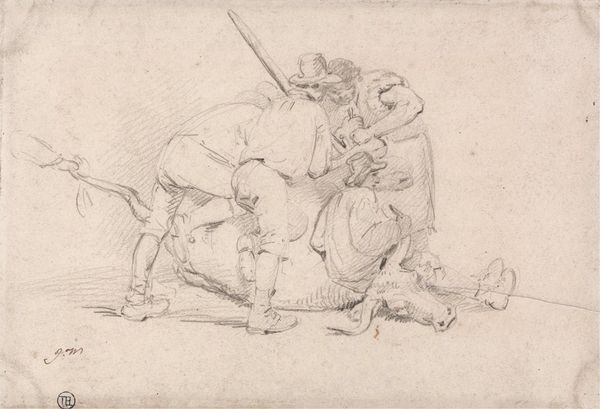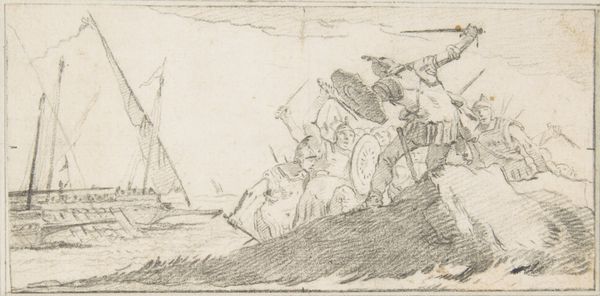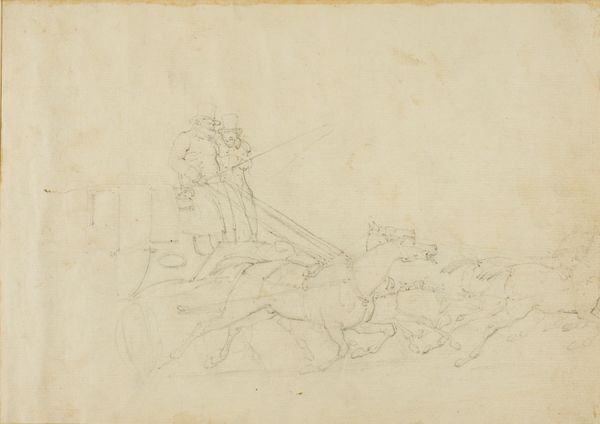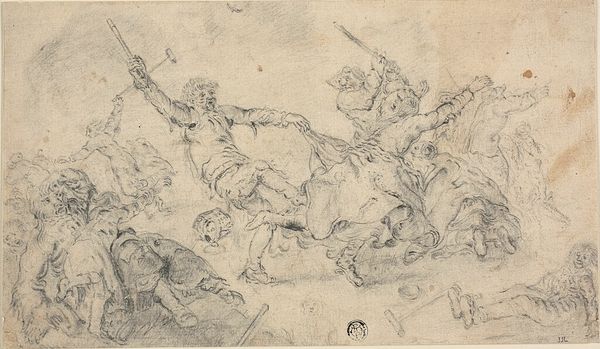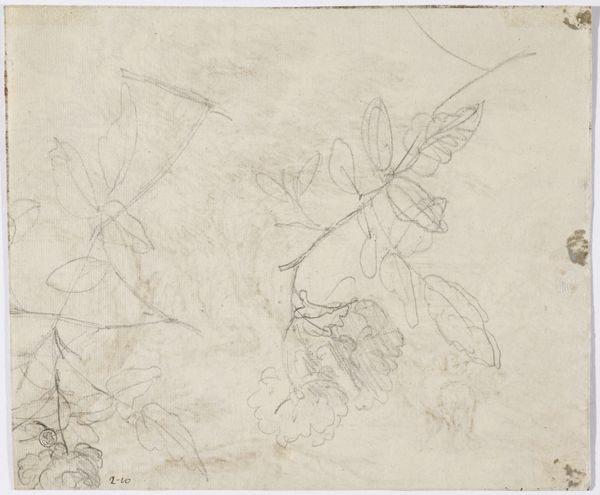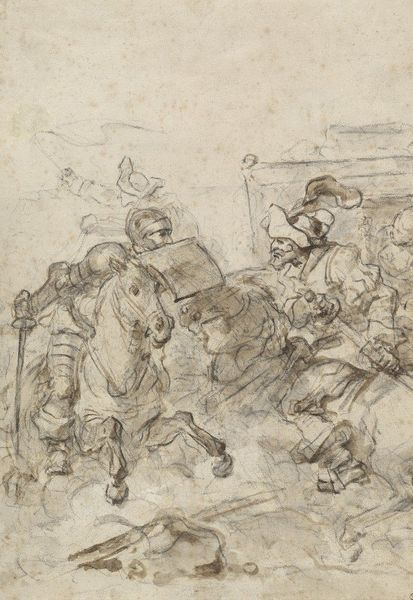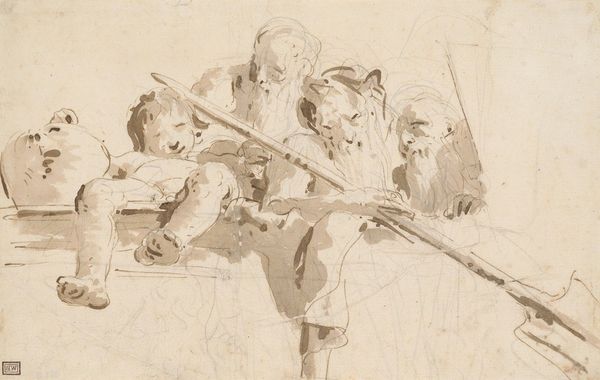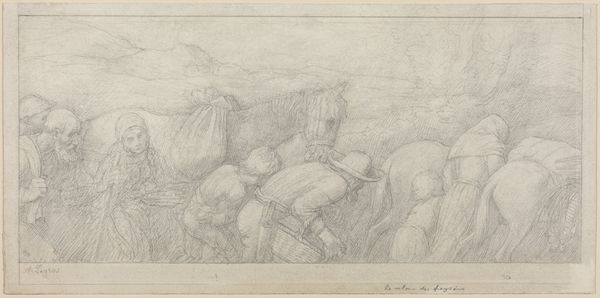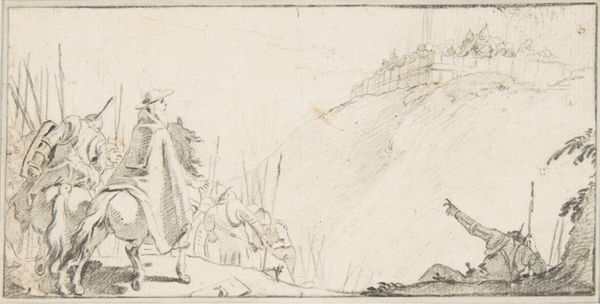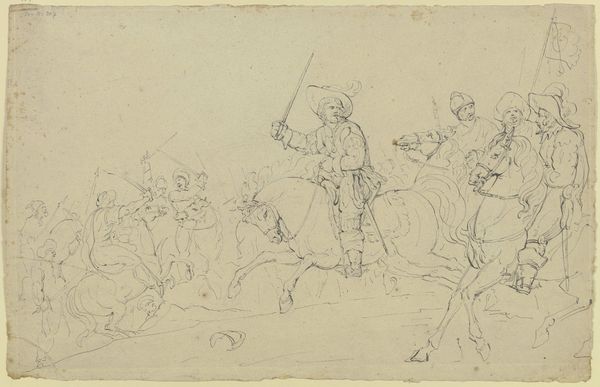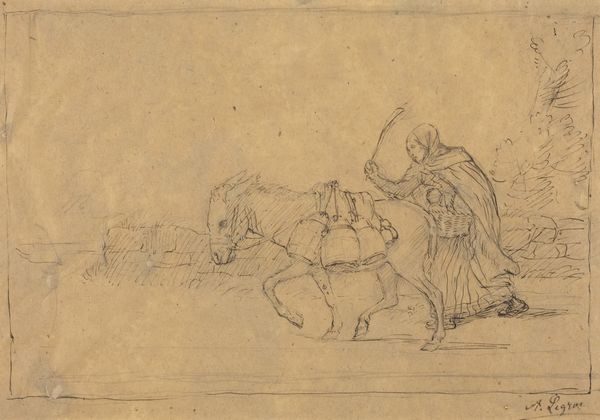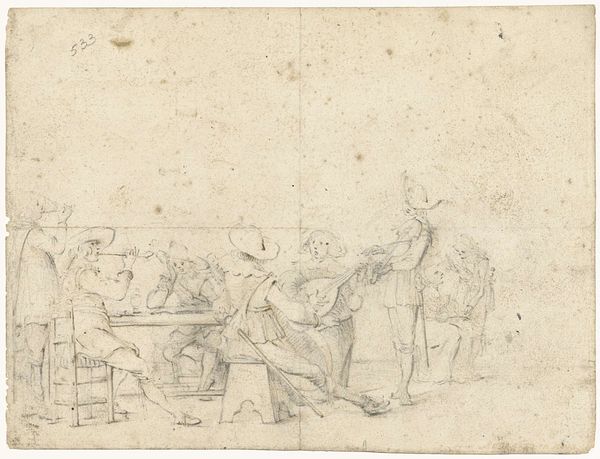
drawing, pencil
#
portrait
#
drawing
#
amateur sketch
#
light pencil work
#
quirky sketch
#
pencil sketch
#
incomplete sketchy
#
figuration
#
personal sketchbook
#
romanticism
#
pencil
#
sketchbook drawing
#
pencil work
#
academic-art
#
sketchbook art
#
initial sketch
Dimensions: height 91 mm, width 109 mm
Copyright: Rijks Museum: Open Domain
Editor: This is "Two Sketches of a Seated Figure" made with pencil between 1770 and 1825 by Simon Andreas Krausz. They're incredibly simple, light pencil strokes barely suggesting form. It almost feels voyeuristic, like a peek into the artist’s personal sketchbook. What catches your eye about this work? Curator: I'm drawn to the socio-political implications of capturing seemingly ordinary figures. The period suggests a rise in interest in the everyday, fueled perhaps by Romantic ideals but filtered through academic training. We might consider, what did it mean to sketch anonymous figures in that time? Were these sketches meant for a larger, perhaps more "important" work? Were these figures marginal members of society? The lack of detail lends itself to imagining stories behind these sitters. Editor: That’s fascinating, thinking about these figures as possibly marginal. I was initially focused on the artist's process, but now I wonder about the people depicted. Do you think the act of sketching them changes their social standing, even temporarily? Curator: Absolutely. The act of representation, even in a quick sketch, inevitably alters the relationship between the artist, the subject, and the audience, if there is one. This touches on larger discussions about who has the right to represent whom and what purpose that representation serves. Editor: So, by sketching them, Krausz is engaging with the politics of imagery, even if subtly? Curator: Precisely. And it’s worth considering where these sketches were kept, who might have seen them, and how that circulation, or lack thereof, impacted their meaning. Editor: This has really shifted my perspective. I went from seeing just simple sketches to understanding them as potential social documents. Curator: That's the power of looking through a historical lens. It reminds us that even the simplest images can carry complex meanings shaped by their social and cultural context.
Comments
No comments
Be the first to comment and join the conversation on the ultimate creative platform.
